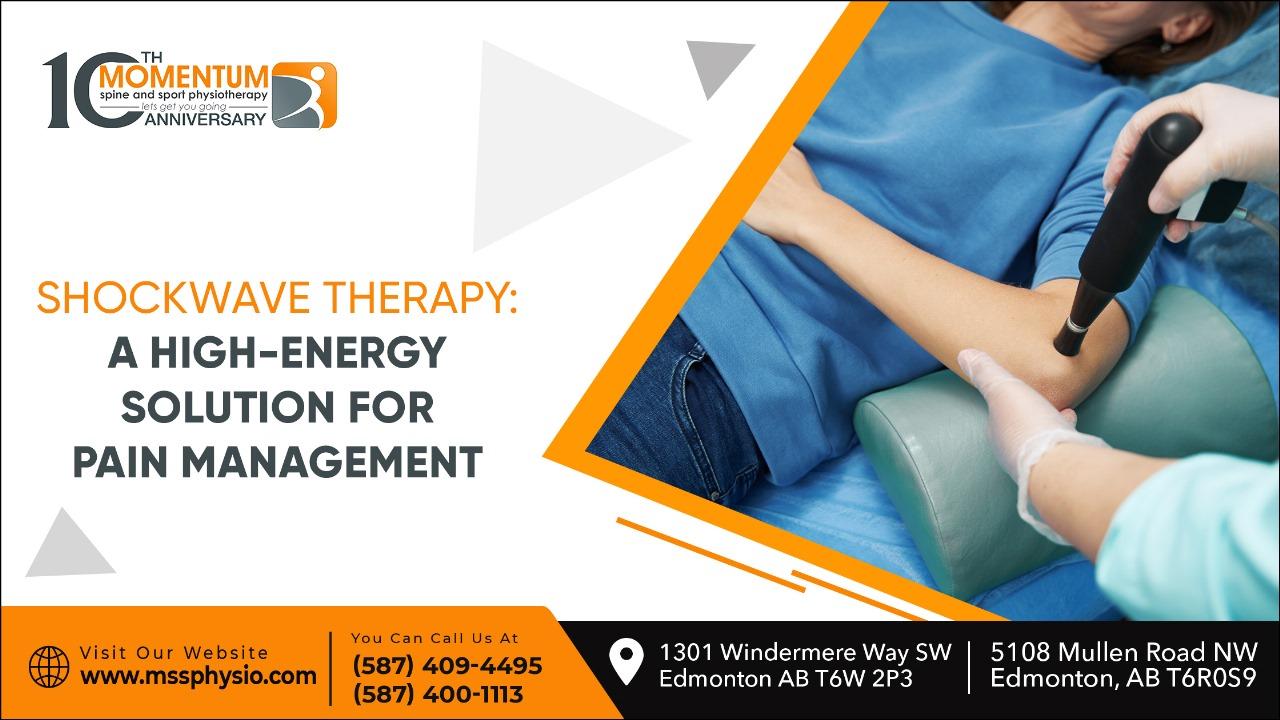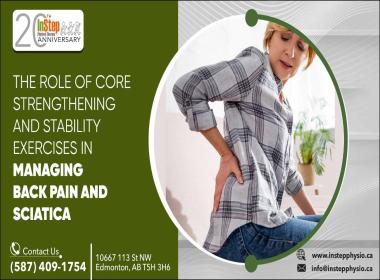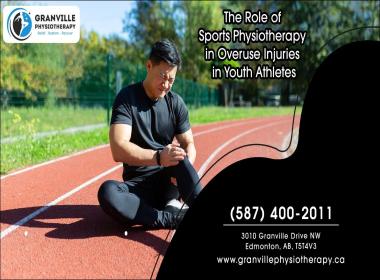In the evolving world of physiotherapy, one treatment stands out for its efficacy in managing pain and facilitating recovery: shockwave therapy. Where active lifestyles and harsh winters can take a toll on the body, shockwave therapy in Edmonton has become a go-to solution for many. Clinics like Momentum Physiotherapy are leading the charge, integrating this innovative treatment into their pain management repertoire. This post delves into how shockwave therapy is revolutionizing pain management and why it's gaining popularity in Edmonton.
What is Shockwave Therapy
A non-invasive treatment that employs high-energy sound waves to target areas of chronic pain and injury is shockwave therapy.
The Science Behind Shockwave Therapy: Unraveling its Healing Mechanism
A fascinating interplay of physics and biology is at the core of shockwave therapy's effectiveness. This treatment has gained a foothold in modern pain management. It operates on the principles of sound wave technology. Understanding its science provides insight into how it facilitates healing and pain relief.
Generation of High-Energy Sound Waves
Shockwave therapy uses a device that generates high-energy sound waves, also known as shockwaves. These waves are not electrical but acoustic waves that carry high energy to painful spots and musculoskeletal tissues. The energy, delivered through the skin via a gel medium, is concentrated at a specific point to target deep tissues without causing damage to the skin or surrounding tissues.
Inducing Microtrauma and Controlled Inflammatory Response
The key to shockwave therapy's healing process lies in its ability to induce microtrauma at the targeted site. This microtrauma essentially re-injures the area on a small scale, stimulating the body's natural healing mechanisms. The controlled injury prompts an inflammatory response, which increases blood circulation and metabolism in the impacted area.
Acceleration of Tissue Repair and Cell Growth
This enhanced blood flow plays a critical role in the healing process. With increased circulation, the affected area receives more oxygen and nutrients, crucial for tissue repair. The shockwaves also stimulate the proliferation and differentiation of stem cells, which contribute to tissue regeneration and healing.
Breaking Down of Calcifications and Scar Tissue
Shockwave therapy can be particularly effective for conditions where calcifications or scar tissue contribute to pain (such as tendinopathy). The waves break down these calcifications and reduce the scar tissue, which helps to restore mobility and relieve pain. This process also alleviates pressure on nerves and blood vessels in the affected area.
Alleviation of Pain
Shockwave therapy effectively impacts the nerve fibers that send pain signals to the brain. Reducing the activity of these pain pathways significantly lessens pain perception. Moreover, it stimulates the release of endorphins, the body's innate pain alleviators, often resulting in prompt pain relief.
Conditions Benefiting from Shockwave Therapy
Shockwave therapy has proven effective in treating various conditions that cause chronic pain and discomfort. Commonly treated conditions include:
- Plantar Fasciitis: A leading cause of heel pain, often responsive to shockwave therapy.
- Tendinopathies: Such as Achilles tendonitis or tennis elbow, where tendon inflammation causes significant pain.
- Shoulder Pain: Particularly rotator cuff injuries and calcific tendonitis.
- Jumper's Knee: Known as patellar tendonitis, commonly seen in athletes.
- Shin Splints: Runners commonly experience pain along the shinbone's inner edge, a condition known as 'shin splints'
- Chronic Pelvic Pain: Including certain types of prostatitis and erectile dysfunction.
- Stress Fractures: To accelerate healing and reduce pain.
- Scar Tissue Treatment: Helps to break down scar tissue and improve mobility.
Types of Shockwave Therapy: Focused and Radial
Shockwave therapy is broadly categorized into Focused Shockwave Therapy and Radial Shockwave Therapy. Each type has unique characteristics and applications, making them suitable for different medical conditions.
Focused Shockwave Therapy
Focused Shockwave Therapy is renowned for its deep tissue targeting capabilities. Utilizing single acoustic waves, this therapy can reach deep into the body's tissues, making it highly effective for treating ailments situated far beneath the skin's surface. Its hallmark is its precision; the focused waves are directed meticulously to the exact areas of pain or injury, minimizing the impact on surrounding tissues.
This level of precision makes it especially beneficial for addressing localized, internal conditions such as deep muscle tissue injuries or chronic elbow pain. The intensity and depth of the waves can be customized, allowing for a highly personalized treatment plan tailored to each individual's specific needs and pain tolerance.
Radial Shockwave Therapy
Radial Shockwave Therapy, in contrast, is distinguished by its ability to cover broader areas. This therapy is designed to treat conditions closer to the skin's surface, as the waves disperse radially, affecting a wider expanse of tissue. Its efficacy lies in pain management and enhancing mobility, making it an ideal choice for conditions like plantar fasciitis or superficial tendinopathies.
The less penetrative yet expansive nature of the waves means that Radial Shockwave Therapy is versatile and suitable for various conditions, including sports injuries, cellulite reduction, and aiding in bone healing processes. It’s a preferred choice for conditions that don't require the depth of penetration that focused waves provide but need a broader therapeutic touch.
Contraindications of Shockwave Therapy
While shockwave therapy is safe for many, certain conditions contraindicate its use:
- Pregnancy: Not recommended due to lack of research on effects on fetal development.
- Blood Clotting Disorders: Including patients on anticoagulant therapy.
- Presence of Malignancy: Not advised over areas with cancerous tumors.
- Infections: Not to be used in areas with infections to avoid spreading.
- Over Growth Plates in Children: These should be avoided in young patients whose bones are still growing.
Individuals with cardiac conditions or those with pacemakers should also consult their physician before undergoing shockwave therapy.
Embracing Innovation in Pain Management
Shockwave therapy represents the innovative edge of pain management, combining cutting-edge technology with the body’s natural healing mechanisms. In Edmonton, clinics like Momentum Physiotherapy offer this state-of-the-art treatment, providing patients with a high-energy solution to overcome chronic pain and reclaim their active lifestyles. With its growing popularity and proven effectiveness, shockwave therapy is set to remain a key player in physiotherapy and pain management.
Also read about:
Is it cheaper to have simple custom made furniture in UAE
Best Furniture Shop in UAE
What exactly is a Commercial Contract










